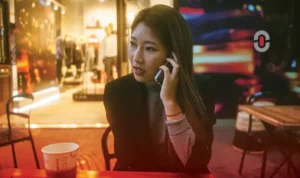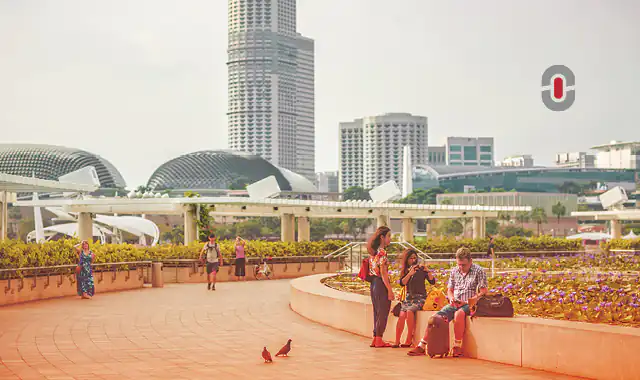The Republic of Singapore is well-known as an island city-state, the smallest nation in Asia, which gained independence from Malaysia in 1965. A melting pot of cultures, it is a linguist’s paradise because of the broad variety of languages spoken there.
From Malay and Tamil to English and Singaporean Mandarin, you’d think that these four languages exist independently of each other. Actually, there’s one other language to consider in the mix and that is the language of Singlish. If you’ve never come across this term, it’s no surprise.
That’s because Singlish is not an official language and it’s primarily spoken at street level. But what is Singlish? What are its defining characteristics? And how has it evolved? These are the questions we explore in this article and provide answers to. Let’s take a closer look.
What is Singlish?
In short, Singlish is considered a colloquial combination of Singapore’s main languages together with English. When it became an observable phenomenon in the 1970s, and even to the present day, many powerful figures in government have called for its disuse.
The reason behind this is that high-ranking officials wanted the entire population to learn “proper” or grammatically correct English at schools and during extramural classes so that the country could attract foreign investment, communicate more effectively with the English world, and attract access to technological know-how.
Of course, efforts to limit the use of Singlish have been met with some resistance. There are a few reasons for this. Speaking full-on “proper” English tends to indicate that one is considered too posh. In addition, it’s a way of colorfully expressing oneself to one’s peers or strangers. But beyond this, it also has a place in media and arts and culture.
For example, certain plays, TV shows, and even advertisements use Singlish as a way of communicating with the “common man”, despite official resistance to this development. But what are the defining characteristics of this interesting language? Let’s dive in.
Defining characteristics of Singlish
There are thousands of examples of Singlish words, phrases, and sentences out there. As a point of illustration, there is the phrase “phone no ding dong” used when one puts their phone on silent. But there are so many others. What is interesting about Singlish is its grammatical structure (or lack thereof). Let’s explore how this “language” is characterized:
- It contains non-standard features of the English language
- It incorporates elements of other languages (e.g. Tamil, Hindi, Hokkien, Cantonese, Teochew, Malay, etc.)
- It has its own unique grammatical structure: grammatical endings, tenses, plurals, the definite article and the linking verbs are often ignored
- Pronunciation is different, too
- The sentence endings “lah”, “leh” and “lor” are common in Singlish conversations
- The repetition of words or parts of words to convey specific meanings – a process known as “reduplication” – follows certain principles in Singlish
Because of its lack of grammatical rule-following, Singlish has been labeled as “poor” or “bad” English by officials who urge the population to speak “proper” and grammatically correct English. However, linguists tend to view it differently.
They believe that it is a distinct Singaporean evolution of a language that represents the country’s distinct social stratification and multiethnic social milieu. Furthermore, these specialists believe that the “language” of Singlish does have its own grammatical rules and structures.
Although not followed strictly or formally enshrined, these rules and structures are commonly known among the local population and used in daily situations such as ordering coffee, taking a taxi, inviting someone over for a meal, asking how one is, and commenting on others’ dress styles, behaviors, and attitudes, to name just a few.
The evolution of Singlish over time
 Ever since Singapore’s colonial past came to an end, English was a language that was spoken by a few elites. It was the language of official government records and was also used in courts of law.
Ever since Singapore’s colonial past came to an end, English was a language that was spoken by a few elites. It was the language of official government records and was also used in courts of law.
However, the then-government decided to expand the use of English on a more widespread basis so that the country could take better advantage of foreign investment and communicate more effectively with the rest of the English-speaking world.
That’s why English started being taught in schools broadly. However, despite this development, plays and television productions in the 1990s gained a lot of popularity due to their use of Singlish, causing concern by schoolteachers and government officials alike in that “improper English” was being consumed and that this would stifle their efforts in teaching the correct rules of the language.
A few years later, in 1999, expressing deep concern over the proliferation of Singlish throughout the island state, then Prime Minister Goh Chok Tong spoke about the importance of using standard English by Singaporeans in order to remain competitive and relevant in the global economy.
While he said that it was not necessary to speak with precise British, American, or Australian accents, citizens should focus on English that is understood by the international community.
In addition, then Senior Minister Lee Kuan Yew added to the concern over the increased use of Singlish (also in 1999) and stressed the importance of speaking and writing standard English, while emphasizing that Singlish was considered a handicap.
A year later in 2000, the government launched the nationwide Speak Good English Movement (SGEM). This is an annual campaign, seeking to encourage all Singaporeans to speak grammatically correct English. The reason behind this is for them to be easily and universally understood.
However, local Singlish speakers have argued that despite the government’s best efforts, speaking Singlish is an important way to cut through racial differences while being a distinct marker of a multiethnic Singaporean identity. As such, it is viewed as an essential part of local culture and heritage.
Conclusion
Today, although Singlish can still be heard in many different places around the island state, there is an effort to better understand the differences between Singlish and English, enabling locals to code-switch with ease so that they speak grammatically correct English in professional settings.
Understanding these deep cultural and linguistic nuances is an important way for linguists to be aware of what they are translating and it requires an in-depth knowledge of the culture and society before embarking on any translation or transcription project.
